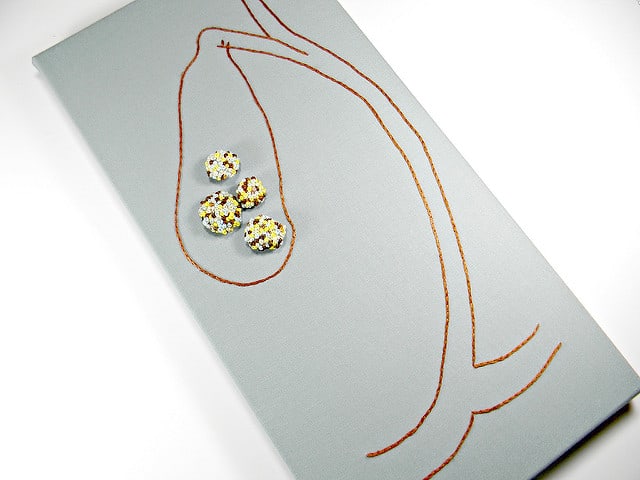What Is A Gall Bladder Diet?

Photo: Hey Paul Studios
According to the National Institutes of Health (NIH) and the National Institute of Diabetes and Digestive and Kidney Diseases (NIDDK), roughly 20 million Americans suffer from gall stones, with around 1.8 million of them requiring a trip to the emergency room. Gall stones are usually characterized by either a sudden and intense pain the upper right area of the abdomen, pain in the shoulders, or pain between the shoulder blades due to a blockage of the cystic duct or common bile duct (see below). One should see a doctor if the pain lasts more than 5 hours, you have a fever, or you develop a yellowing of the skin or eyes (jaundice). Sufferers of this surprisingly common digestive disorder should consider altering their diet to aid in passing the stone through the body naturally and reducing the chance of a future attack.
Bile and the Gallbladder
The gall bladder is a pear-sized gland that makes up a portion of the digestive system and sits directly below the liver. Its purpose is to store bile and digestive enzymes produced by the liver, which are typically released into the small intestine during meal time to help break down fat.
Formation of Gallstones (cholelithiasis)
Gallstone formation occurs in the gall bladder when natural chemicals like cholesterol and calcium harden to form what look like small rocks or gravel. Gallstones can be anywhere from a few millimeters to several centimeters in diameter, and are usually benign.
There are two types of gallstones: cholesterol and pigment. Approximately 80% of gallstones are of the cholesterol type; which are larger, green-yellowish in color and are formed from hardened cholesterol. Pigment gallstones, on the other hand, are dark in color and are composed of bilrubin.
The process of forming gallstones is usually painless and often goes by undetected. Should they become lodged in the bile ducts, however, they usually cause severe abdominal pain. If left untreated, gallstones can cause cholecystitis, cholangitis, gangrene and jaundice, all of which are very serious health problems.
Causes
When one considers that gall stones are most often caused by excessive bad cholesterol and low intake of healthy fats, it comes as little surprise that the disorder is far more common in industrialized nations. Another cause of gallstones is what’s also referred to as pigmentation stones. Pigmentation stones are caused by excess bilirubin and are most common in people who suffer from liver disease, bile duct infections and blood disorders such as sickle cell anemia.
Certain groups of people are more likely to suffer from gall stones than others. These vary significantly and include the following groups:
- Women
- Those 60 or older
- Hispanics and Native Americans
- Pregnant women
- The obese and overweight
- Those who eat a lot of processed foods
- Those on cholesterol drugs or hormone therapy
- Diabetics
- Those with a family history of the disorder
Treatment
One of the ways to eliminate gallstones or prevent gallbladder cancer is to surgically remove the gall bladder because it’s not considered an essential organ for health. Unfortunately, this isn’t exactly true. The gall bladder plays a critical role in proper digestion of not only fats, but food in general and without a gall bladder, chronic diarrhea, malabsorption and serious fat and nutrient deficiencies could become prevalent. People who have had the organ removed have been known to experience severe and lasting depression and even permanent personality changes.
Diet and Gall Stones
In order to reduce the risk of serious problems with gall stones, it’s important to modify your diet. All processed foods such as white sugar and flour and vegetable oils should be strictly avoided. Instead, a diet of wholesome, fresh foods should be adopted. Focus particularly on fresh fruits and vegetables and whole grains, which help to remove extra cholesterol from the body. Also, choose animals products with the most nourishing, high-quality fats such as oily fish, wild game, lamb, grassfed meat and dairy and eggs. Incorporating these into a gall bladder diet will give plenty of good cholesterol to counteract the bad.